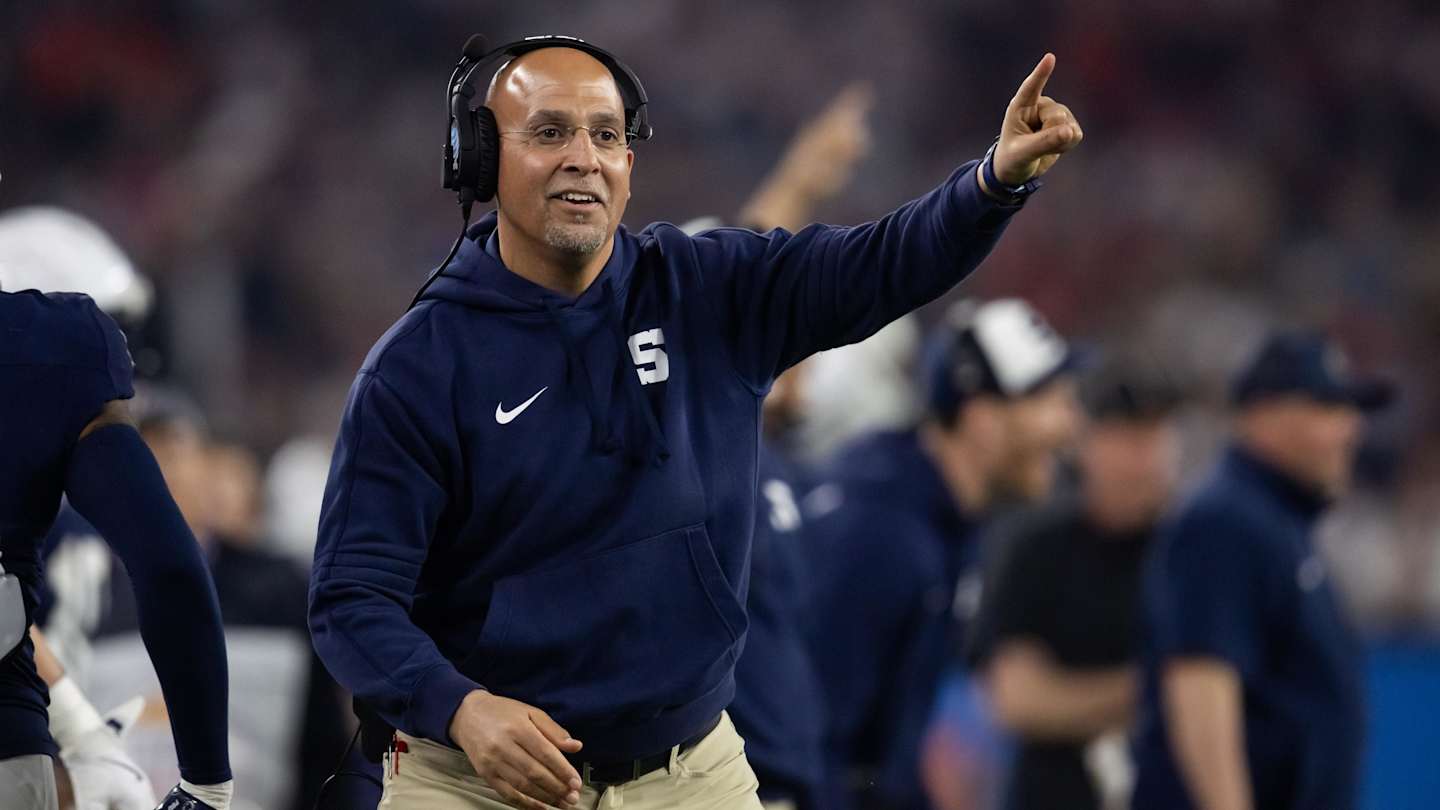Penn State overcame a challenging moment in the Fiesta Bowl against Boise State, bouncing back from adversity to secure a 31-14 victory and earn their first-ever trip to the College Football Playoff semifinals. The Nittany Lions showcased resilience, particularly through quarterback Drew Allar, who snapped out of a cold streak to lead a pivotal touchdown drive. The win was highlighted by Penn State’s ability to stymie Boise State’s star running back Ashton Jeanty and execute in key moments.

Offensive Analysis: B-
The running game powered Penn State’s offense, with Kaytron Allen and Nicholas Singleton combining for 221 yards on 29 carries. Allen was especially dominant, amassing 328 rushing yards over three postseason games and outperforming Jeanty in this matchup. Despite their success, offensive coordinator Andy Kotelnicki made questionable decisions on critical third-and-short plays, sidelining the effective running backs in favor of overly complex schemes. This led to a 2-for-5 conversion rate in those situations.
Quarterback Drew Allar was inconsistent, completing just 53.4% of his postseason passes. He struggled during a seven-pass incompletion streak and was sacked during that stretch but rebounded to deliver a crucial touchdown drive. Allar threw for three touchdowns, connecting twice with tight end Tyler Warren and once with receiver Omari Evans. However, Allar’s passing game was narrow, with only four targets utilized, Warren receiving half of his throws.
Defensive Analysis: A
Penn State’s defense set the tone by focusing on neutralizing Ashton Jeanty, who entered the game as a threat to break Barry Sanders’ single-season rushing record. The Nittany Lions held him to 104 yards on 30 carries, without touchdowns and with only four first downs. Jeanty’s 3.5 yards per carry were well below his season average. Defensive end Dani Dennis-Sutton spearheaded the effort with 2.5 tackles for loss, while the unit forced multiple turnovers, including three interceptions and two fumbles.
The defensive performance was even more remarkable considering the loss of Big Ten Defensive Player of the Year Abdul Carter to injury in the first half. A well-executed contingency plan allowed other players, such as Dom DeLuca, Amin Vanover, and true freshman Max Granville, to step up effectively. Despite allowing a 53-yard touchdown pass due to a coverage lapse, the defense maintained control and helped secure the win.
Special Teams Analysis: B
Punter Riley Thompson had a strong performance, averaging 47.2 yards per punt, including a 63-yarder and three punts over 50 yards. He placed two inside the 20-yard line. Kicker Ryan Barker made his lone field-goal attempt from 40 yards, while Boise State missed two field goals, giving Penn State a significant edge. However, punt coverage showed vulnerability, allowing a touchback due to a misstep.
Coaching Analysis: B+
Defensive coordinator Tom Allen earned high praise for devising a game plan to neutralize Jeanty and making adjustments after Carter’s injury. His strategy played a key role in the team’s success. Offensive coordinator Andy Kotelnicki’s creativity has been a strength throughout the season, but his decision-making on critical short-yardage plays drew criticism. Head coach James Franklin’s aggressive and process-driven approach continues to define Penn State’s postseason, as he has fostered a mindset focused on achieving incremental victories.
Penn State’s Fiesta Bowl victory was a testament to its adaptability and determination, keeping their championship aspirations alive as they move on to the College Football Playoff semifinals.